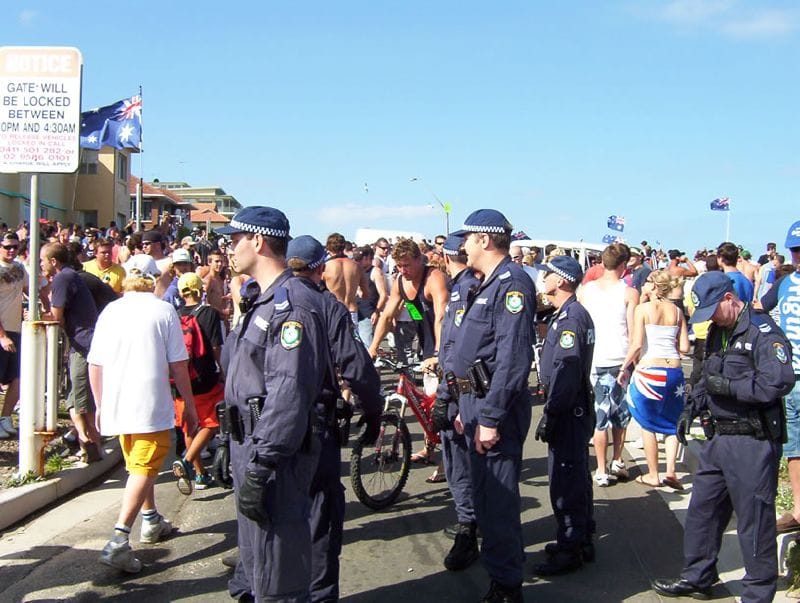
Kelly Thompson took out an intervention order against her former partner, Wayne Wood, and made 38 phone calls to police about him. When a neighbour called Werribee police, concerned because Wood was lurking, the constable on call took a gamble that Wood’s visit was benign. He asked the neighbour to call back if he heard “yelling or screaming”. That night Wood stabbed Kelly to death and then took his own life.
Monash University professor Jude McCulloch tells the story dispassionately when asked to give an example of a “preventable” domestic homicide.
At least one woman a week is killed by a man in Australia; intimate partner homicide is the leading cause of death among Australian women aged 15 to 44 (and the most common form of violence against women worldwide). With fellow Monash researchers Dr Kate Fitzgibbon, associate Professor JaneMaree Maher and Professor Sandra Walklate, McCulloch will review 500 intimate partner homicides that have taken place over the past 10 years in Australia.
The Australian Research Council funded research aims to identify “potential points of intervention that might have provided opportunities to prevent such killings”. The intention is to assist in developing a “more risk sensitive approach” to these crimes with the aim of enhancing women’s security here and overseas.
“I was in my early to mid-20s and there were a group of people, mainly women, in local legal centres who took that issue very seriously and recognised at the time that women were being killed and that a lot of those killings were preventable …"
McCulloch was a lawyer before becoming an academic. Her first job was at a women’s refuge where she worked for a year before joining the St Kilda Legal Service.
“Family violence was one of things I focused on and in particular the lack of any assistance that women could get from the police,” she recalls.
“That was early ‘80s. Police still had standing orders at that stage that they shouldn’t get involved in private matters and that was code for saying if it’s a domestic assault then it’s not really police work, even though assault was in the crimes act and formally you weren’t permitted to assault your wife.
“I was in my early to mid-20s and there were a group of people, mainly women, in local legal centres who took that issue very seriously and recognised at the time that women were being killed and that a lot of those killings were preventable …
“There was just a tremendous omission of support to women who were in very dangerous situations. There was a lack of state protection when there should have been protection, so women were effectively treated as men’s property. If there was a homicide then the male responsible would be prosecuted, but even the courts treated it far less seriously than they would stranger homicide.”
Like rape, family violence is a “gendered crime”, she says. “Women tend to be blamed. The harm and violence tends to be minimised.”
McCulloch moved on to the Flemington Legal Service and began investigating police shootings, the subject forming the basis of her PhD thesis.
She investigated paramilitary policing and counter terrorism, and that research led her back to family violence, where female victims did not receive comparable protection from the state. “I looked at the way counter-terrorism was approached and the zero tolerance for risk in that area ... compared to the way the risk of family violence and the killing of women is approached,” she says. “If you look at the empirical evidence, far more women, or people are killed in family violence, many, many more than in terrorism.”
Yet McCulloch readily admits that great strides have been made. “It is not hidden in the way it was in the past. It’s recognised as a pressing social issue. The police are much better than they were.”
The Victorian Royal Commission into Family Violence “was a milestone”, she says.
“The State Government has committed to implementing the recommendations of that royal commission and is taking action. Victoria is, in many respects, leading the world, which makes it an inspiring place to do this sort of work. So, for example, Victoria is very committed to not just responding to family violence, but ending it.”
McCulloch is a member of the Family Violence Prevention Taskforce, reporting to the Minister for the Prevention of Family Violence, Natalie Hutchins. “What we are aiming to do is address root causes, the drivers of family violence,” says McCulloch. “So the next generation is not grappling with similar problems.”
While Victoria leads the nation, “the Federal Government needs to change its national security policy to have a better focus on family violence and gendered crimes,” she says. Another issue is the Family Court, which “does not appear to be very sensitive to the causes of family violence … You can have a state intervention order that is aimed at preventing violence by a man against a woman and then the Family Court will undercut that by enforcing contact and access, so the woman can’t disengage.”
And then there’s homelessness. A study by the Australian Institute of Health and Welfare found that between 2011 and 2014, 36 per cent of people – mostly women and children – who accessed homeless services did so because of family violence.





